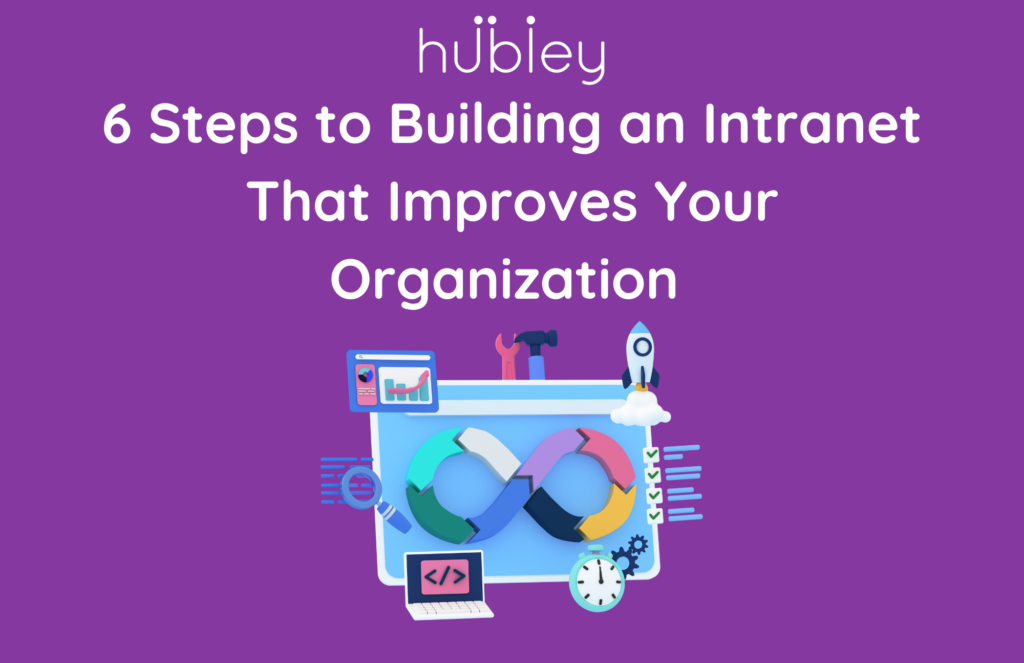Building and launching anything at the enterprise level can seem daunting. So obviously launching something that will change how your business communicates and collaborates can feel particularly overwhelming. This is especially true when you remember that you need to get an entire team of employees on board with the change.
Still, building an intranet site doesn’t have to be so cumbersome. Comprehensive cloud-based solutions that provide everything you need to create a user-friendly experience your employees will love are available.
Are you considering enhancing your internal communications strategy with an intranet? If so, the following sections detail the steps you must take to ensure your enterprise reaps the greatest benefit.
Things to Consider Before Building an Intranet
Building an intranet requires careful planning beforehand. Below are several considerations you must make as you move toward intranet implementation.
The Cost of the Project
There’s no way around the fact that building an intranet site will require investments both from your users and monetarily. So, before you proceed, you must know you have the budget not only to develop but also to maintain your company’s platform.
Intranet pricing will depend on a few factors, including the following:
- Your required functionality
- Whether you need extensive customization
- The number of employees who will access the intranet
Your decision-makers will need to balance finding an affordable solution and ensuring that your chosen provider allows you to accomplish your goals.
The Goals You Need to Accomplish
Intranets may sound complex, but it’s important to look at them as one more tool in the kit that helps you achieve your long-term business goals. Thus, you need to establish those goals and consider how an intranet can help you meet them — and which integrations and features will help you do that.
For example, suppose that your goal is to increase productivity and output by 50%. In that case, you will likely need to put in place an intranet focused on collaboration features that reduce time spent on unnecessary tasks. These collaboration features facilitate clarity in the project management process.
Are Your Employees Ready to Adopt the Intranet as a Tool?
Just because you pay for an intranet doesn’t mean your employees will use it. To get employees to adopt your intranet, it’s essential to:
- Ensure the executive team communicates its purpose
- Lay out how the intranet will benefit them in an average workday
- Select a convenient platform that is easy for non-technical staff to use
- Create a clear acceptable use policy so employees understand your expectations
- Put in place a plan for adoption
Your employees are more likely to adopt your intranet when it’s easy to use, solves their pain points, and provides clear benefits over past solutions.
What Makes Intranet a Useful Organizational Tool?
Communicating the benefits of an intranet application won’t be an issue once your decision-makers see the value it provides. It enhances internal communication in a way that few solutions can.
An intranet gives teams a way of contacting each other for immediate feedback without using personal devices or long email chains. As a result, company-wide announcements have become much more efficient and can include multimedia elements.
Additionally, cloud-based document storage creates a single source of truth that makes real-time collaboration using up-to-the-minute information a reality. You can make better business decisions in a snap when everyone works from the same data. For full transparency and recordkeeping, an intranet will also track who edits documents and when they do so.
Finally, having an intranet makes for easy management of all employee-related tasks, including:
- New employee onboarding
- Policy update acknowledgments and signatures
- Learning module completion
- Support tickets
- PTO requests and approval calendars
These features and capabilities make intranet adoption a no-brainer for enterprises looking to prioritize efficient communication and foster a productive work environment.
6 Steps to Building an Intranet that Delivers
Now that you’ve completed the prep work and understand the value of an intranet, you may be wondering how to start building one for your organization. The following six steps will help you create an intranet solution that impacts your business.
1. Set Measurable KPIs
While it’s crucial for your company to have intranet-related goals, they won’t be as meaningful if you have no idea how to assess when and whether you’ve met them. For this reason, setting measurable, goal-related key performance indicators is vital. For example, if your goal for this year is to increase productivity among your sales team by 50%, consider measuring overtime hours or revenue per employee. To improve customer service, use a customer satisfaction score to measure performance. Knowing your KPIs for each goal will help you measure progress. Crucially, it will also assist you in evaluating what intranet features might be most helpful in facilitating that progress. For instance, will centralized document storage help the sales team close more deals because of better access to updated and accurate information? Your KPIs supply this insight, allowing you to build an intranet that works well for your business.
2. Consider Necessary Integrations
Part of an intranet’s purpose is to streamline the way your organization works. If your intranet doesn’t integrate with any of the applications in your current tech stack, that will become difficult to achieve. As you choose a software solution and build your intranet, consider which apps you must integrate into the platform. For example, suppose that your organization uses things like MailChimp to manage your leads, Calendly for setting sales appointments, and Zoom for virtual product demonstrations. When building an intranet with SharePoint and other popular apps, you’ll need a platform that supports such integrations. Keeping some platforms the same can be helpful for your employees. It will keep them from becoming overwhelmed as they learn how to use the new intranet while getting used to an entirely new suite of business applications.
3. Assess Employee Pain Points
Your employees will be actively communicating and collaborating on the intranet daily. For this reason, it’s essential to understand their frustrations with their current communication and project management solutions and what changes they would like to see. As you customize and configure your company’s intranet interface, this will help you understand which features and apps to prioritize in the new network. Catering to employees’ needs will also help foster quicker and more enthusiastic adoption of the intranet among employees.
4. Decide on Features
Once you understand your employees’ pain points, it’s time to decide which features you will add to your out-of-the-box intranet software platform. As you consider the functionality, keep the following in mind:
- What will your intranet content strategy include?
- Does your team move around? If so, how will you get intranet access on the go?
- Will you need extranet access to collaborate with clients or vendors?
- What are your employees’ needs outside of work? Is a social hub a good idea? Consider the needs and requirements of the people the intranet serves and choose your functionality accordingly.
5. Determine Your Platform
Once you determine those needs, you are in a position to choose your preferred intranet platform. You must select one that fits your parameters instead of forcing a generic solution to meet your business needs. For example, building an intranet with SharePoint is necessary if you use Microsoft solutions for document management. In addition to meeting your needs for features and integrations, it’s also critical that your chosen software platform meets your budget. Decide whether you prefer a perpetual pricing model or a monthly subscription, and make sure to speak with the company about pricing for customizations and unique capabilities.
6. Prepare Training Materials
Employee training and resources are the key to successful intranet adoption. For this reason, employees must receive both live and hands-on training and have access to training materials for independent troubleshooting. If employees always need clarification about how to use the intranet or constantly face roadblocks to task completion, the goal of improved communication, collaboration, and productivity becomes unattainable. It also makes it more likely for employees to seek other solutions or return to old ones.
Building an Intranet Requires Careful Thought and Collaboration
Building an excellent intranet for your enterprise doesn’t start with software installation or platform configuration. Instead, it begins with carefully assessing your organization’s readiness and needs, a deep understanding of your long-term goals, and a commitment to improving communication and productivity in meaningful ways.
Fortunately, hubley supports enterprises through every step of the process, from planning and design to implementation and launch. Our cloud-based intranet platform is customizable to your organization’s unique needs. It features an updated suite of functional projects and employee management apps to help you get the job done.
Best of all, your Microsoft 365 and other enterprise apps integrate into hubley’s user-friendly and brandable interface.
Contact the hubley team today to discover how our flexible solution can help organizations improve how employees work and keep them moving toward your collective goal.









